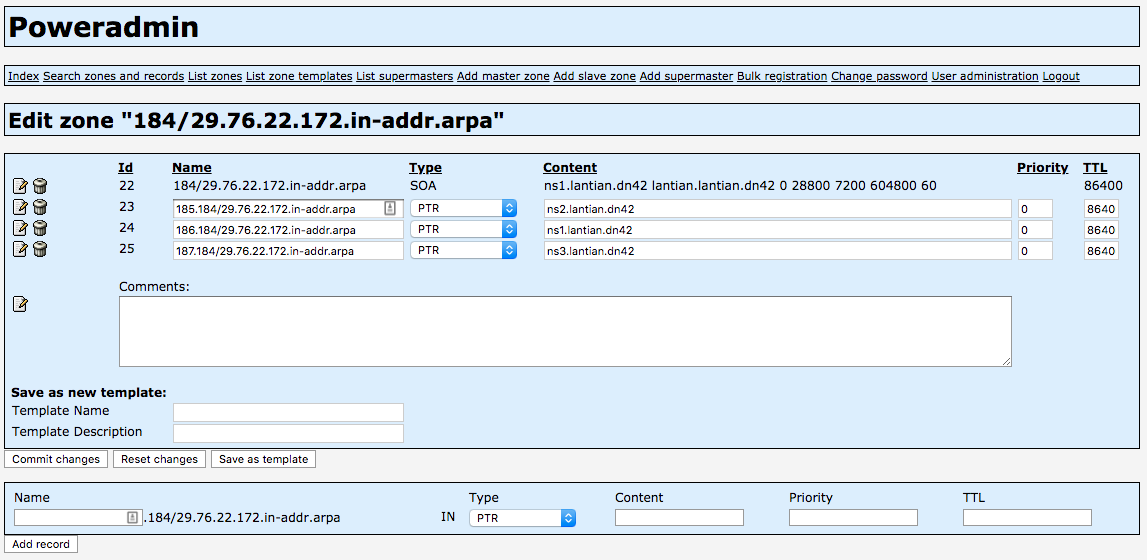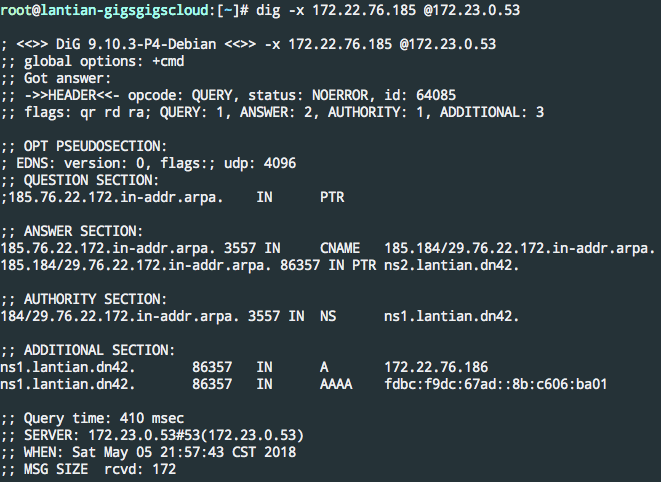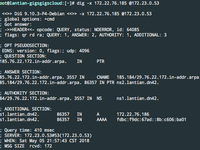This post is automatically translated with LLM. The translation content has NOT been reviewed and may contain errors.
DN42, short for Decentralized Network 42, is a large-scale VPN network. Unlike traditional VPNs, DN42 utilizes technologies commonly deployed in internet backbones (such as BGP), effectively simulating a real-world network environment.
In a previous article, I joined the DN42 network, and in another article, I registered my own domain and configured my DNS server. With a DNS server in place, we can now set up reverse lookup records for our IP addresses. Reverse lookup primarily aids in spam prevention and improves the appearance of outputs in network tools like ping and traceroute.
Setting Up the Resolver for IP Ranges
The first step is to delegate reverse resolution for your IP ranges to your DNS server. My servers are ns[1-3].lantian.dn42. While all could theoretically be specified, DN42 currently requires pull requests for configuration changes—a lengthy process—so I retained only the initial DNS server ns1.lantian.dn42 registered with this IP.
After cloning DN42's data repository, add this line to your IP range file:
nserver: ns1.lantian.dn42
The complete file should resemble:
inetnum: 172.22.76.184 - 172.22.76.191
netname: LANTIAN-IPV4
remarks: Peer with me at dn42@lantian.pub
descr: Peer with me at dn42@lantian.pub
country: CN
admin-c: LANTIAN-DN42
tech-c: LANTIAN-DN42
mnt-by: LANTIAN-MNT
nserver: ns1.lantian.dn42
status: ASSIGNED
cidr: 172.22.76.184/29
source: DN42
Next, git add, git commit, submit a pull request, and await merging and recursive DNS propagation.
Configuring PowerDNS
While waiting, set up the resolver. Following this guide, we already have a PowerDNS server. Reverse IP resolution resembles resolving a special domain:
- For a /24 range, the domain is
[reverse-IP].in-addr.arpa(e.g.,0.168.192.in-addr.arpafor 192.168.0.0/24). - Most DN42 users have smaller ranges (/26-/29). For 172.22.76.184/29, the domain becomes
184/29.76.22.172.in-addr.arpa.
Add this domain in PowerDNS as shown:

Then create PTR records for each IP. For 172.22.76.185, the record is 185.184/29.76.22.172.in-addr.arpa:

After DN42's recursive DNS propagates, query reverse records using dig -x [IP] @172.23.0.53:

For IPv6 reverse resolution in DN42, see this article.
